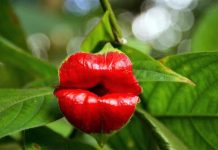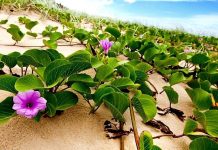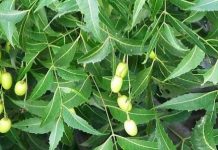Scientific name: Curcuma longaL.
Family: Zingiberaceae
Synonym: Curcuma domestica Valet.
Bengali/Vernacular name: Halud, Haldi (Bengali); Olid (Noakhali).
Tribal name: Laung (Bawm); Olod (Chakma); Kakung (Chak); Amsen (Khumi); Ai-eng (Lushai); Chith nu, Now-h-naw, Ranjan (Marma); Sangfo, Suama (Murang); Chang (Pangkhoa); Nuhaw-bawn, Nyo-nyo (Rakhaing); Sudai, Hailaidh (Tripura).
English name: Turmeric.
Description of the plant: A tall rhizomatous herb, with orange yellow rhizomes, strongly aromatic. Leaves very large, tufted, up to 1.2 m or more long; petiole long, blade oblong-lanceolate. Flowers in dense spike, 10-15 cm long, in the centre of the tuft of leaves; flowering bracts pale green; coma bracts greenish white or tinged with pink.

Plant parts used: Rhizome.
Medicinal uses: Juice extracted from rhizome of the plant with some sugar is taken for the treatment of liver disorder.
Rhizome juice with some sugar is taken for two weeks to treat filariasis.
Rhizome paste is applied externally on the dislocated place after fixing the bone once a day for seven days to treat bone dislocation.
Rhizome paste is applied on the fractured bone and kept for five days by tying with a piece of cloth to treat bone fracture.
Juice extracted from rhizome of the plant is taken to treat cough.
Paste made from rhizome of the plant, after adding little amount of mustard oil and warming in sun, it is applied externally on the infected skin once a day until the eczema is cured.
Rhizome juice is taken to treat gonorrhoea.
Distribution: It is cultivated throughout the country.
Is this plant misidentified? If yes, please tell us….















… [Trackback]
[…] Find More here on that Topic: natureinfo.com.bd/curcuma-longa/ […]